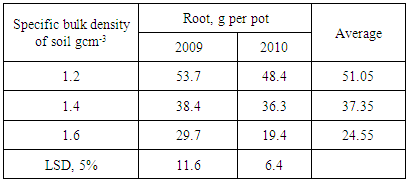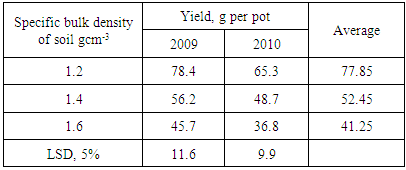-
Paper Information
- Paper Submission
-
Journal Information
- About This Journal
- Editorial Board
- Current Issue
- Archive
- Author Guidelines
- Contact Us
International Journal of Plant Research
p-ISSN: 2163-2596 e-ISSN: 2163-260X
2016; 6(2): 21-24
doi:10.5923/j.plant.20160602.01

Influence of Bulk Density on Soil Resistance and Yield of Tobacco
Ivan Turšić1, Milan Mesić2, Ivica Kisić2, Aleksandar Racz3
1Tobacco Institute Zagreb, Croatia
2Faculty of Agriculture, University of Zagreb, Croatia
3University of Applied Health Sciences, Zagreb, Croatia
Correspondence to: Ivan Turšić, Tobacco Institute Zagreb, Croatia.
| Email: |  |
Copyright © 2016 Scientific & Academic Publishing. All Rights Reserved.
This work is licensed under the Creative Commons Attribution International License (CC BY).
http://creativecommons.org/licenses/by/4.0/

Influence of soil compaction on the growth and development of flue-cured tobacco was investigated at the experimental station of the Tobacco institute Zagreb. Research was carried out in model trials, in Mitscherlich's pots. Three soil compaction levels (1.2, 1.4 and 1.6 gcm-3) were randomized according to the block method with four replications. The soil used in the trials was the plough Iayer of Luvisol, the soil typical of the area in which flue-cured tobacco is grown in Croatia. Tobacco was picked in six harvests, and after the sixth harvest the tobacco root yield was determined by washing it out in a sieve. The soil resistance to penetration was measured during tobacco flowering, and a statistically significant increase of soil resistance (compaction) was recorded in the soil with medium and the highest bulk density compared to that with the Iowest density, increased soil compaction considerably reduced leaf yields and root development of tobacco. Tobacco leaf and root yields were significantly increased by intensified fertilization. The highest leaf and root yields were obtained in the lowest soil compaction.
Keywords: Soil compaction, Soil resistance, Root development, Yield of tobacco
Cite this paper: Ivan Turšić, Milan Mesić, Ivica Kisić, Aleksandar Racz, Influence of Bulk Density on Soil Resistance and Yield of Tobacco, International Journal of Plant Research, Vol. 6 No. 2, 2016, pp. 21-24. doi: 10.5923/j.plant.20160602.01.
1. Introduction
- In Croatia, flue-cured tobacco is grown on sandy and silty loam soils in the River Drava valley.Frequent high contents of silt particles and fine sand in the soil mechanical composition, as well as shallow tillage, influenced an increase in soil compaction in the plough and sub-plough layers. High soil compaction caused reduced root development and lower tobacco leaf yields. Akehurst (1981), Hawks (1970), emphasize that flue-cured tobacco should be grown on loose soils, with a low content of organic matter, total and mineral nitrogen, slightly acid reaction (pH 5.5-6.0) and a rather light mechanical composition. The high content of fine sand and silt particles in the flue-cured tobacco production area in northern Croatia causes frequent crust formation and increased compaction of the plough layer (Butorac, Bašić, 1990). Also sub-plough horizons have increased compaction (bulk density) and reduced permeability due to the unfavourable ratio of macro and micro pores, as well as years-long shallow soil tillage (Turšić et al. 1994, Racz, Butorac et al. 1983, Soane and Ouwerkerk 1994). Lower tobacco yields are a result of soil compaction and increased bulk density, which often impedes the development of tobacco roots into deeper soil layers (Turšić, 1992).Fertilization applied to soils of increased compaction had lower efficiency upon the yield and quality of flue-cured tobacco. Tobacco yield depends on the volume of soil in which its roots develop and from which it takes up the required nutrients. Soil compaction is often a limiting factor in tobacco production and it cannot be solved by intensified fertilization (Butorac et al., 1992, Turšić et al., 1994).The research goal was to determine the influence of soil compaction on the root development and yield of flue-cured tobacco.
2. Materials and Methods
- The investigation was carried out in the greenhouse of Faculty of Agriculture in Zagreb over the period of two years. Three levels of soil compaction were investigated (Table 1).
|
3. Results
- The trial soil was silty loam. It's bulk density in Ap horizon amounts 1.46 gcm-3 (Table 2, Picture 1).
|
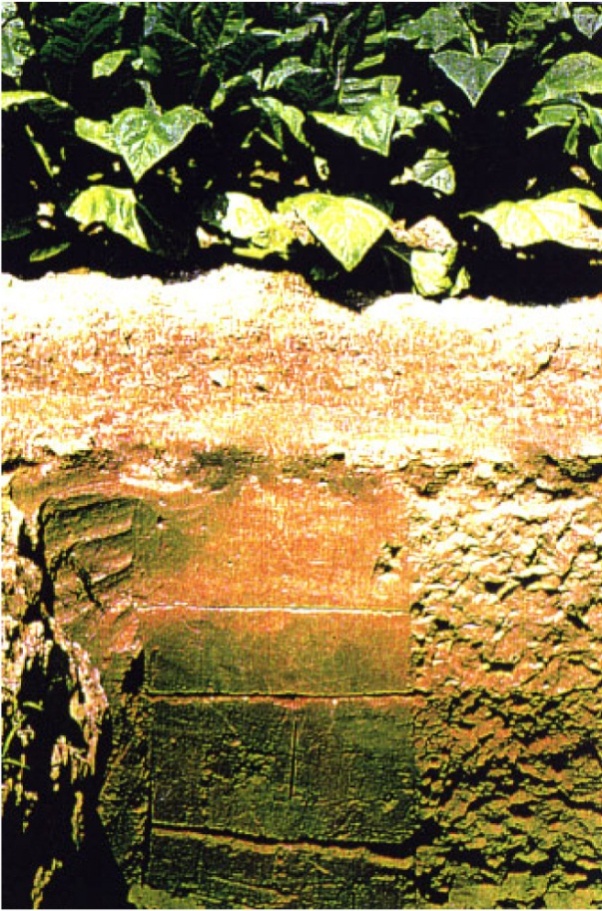 | Picture 1. Soil type (Luvisol) |
|
|
|
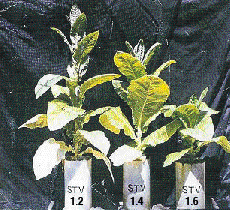 | Picture 2. Influence of soil compaction on the growth of tobacco |
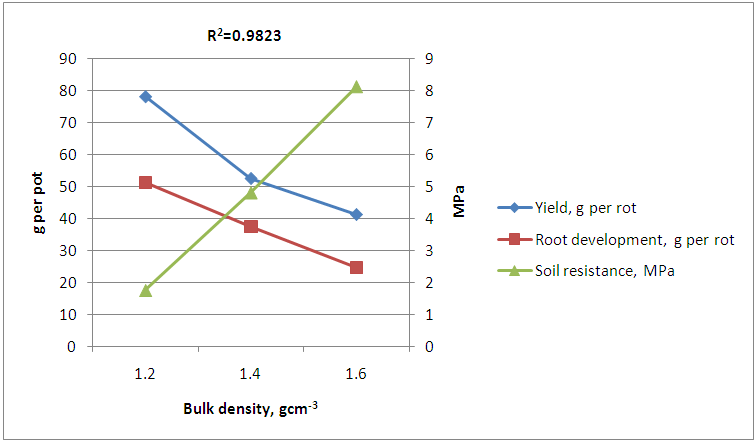 | Graph 1. Influence of bulk density on soil resistance, root development and yield of tobacco |
4. Conclusions
- 1. Increased soil bulk density led to increased soil resistance2. Increased soil resistance decreased significantly the growth and development of flue-cured tobacco roots3. Increase of soil bulk density from 1.2 to 1.4 and 1.6 gcm-3 led to significant decrease of tobacco leaf yield.
 Abstract
Abstract Reference
Reference Full-Text PDF
Full-Text PDF Full-text HTML
Full-text HTML


